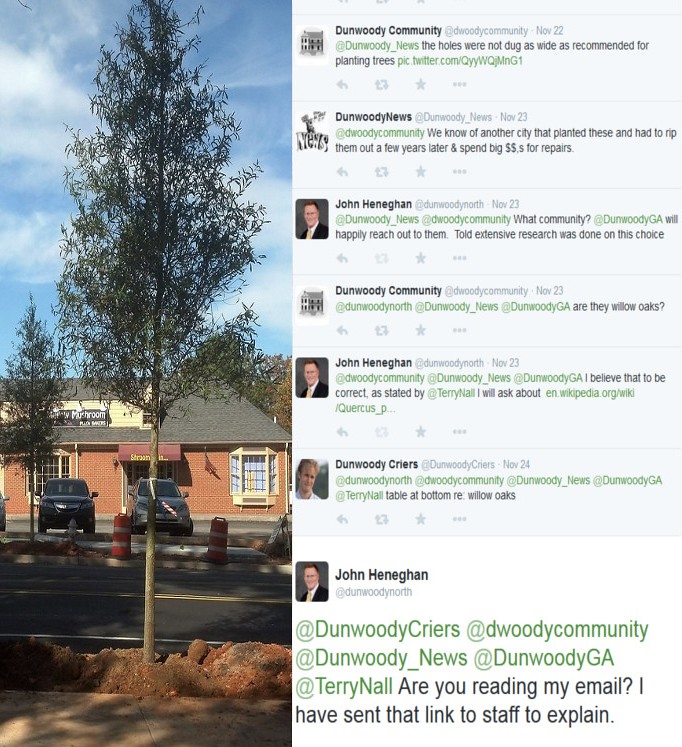Friday, December 5, 2014
Was the Willow Oak the right tree to plant along Dunwoody Village Parkway?
Twitter is a great communication tool for an elected official as sometimes I find interesting conversations or issues being raised which then gives me the opportunity to dig deeper. Here is an example. A conversation was going on regarding the Willow Oak trees that were planted along Dunwoody Village Parkway and their suitability in that specific location. After doing a little research, I found this article on Trees for Parking Lots and Paved Areas that stated in a chart that the Willow Oak was Unsuitable for Restrictive Paved Areas Due to Large Surface Roots.
Based on that documentation, I reached out to staff for an explanation as the tree choice was solely their decision as they are the technical experts (Dunwoody has an Professional Arborist on Staff). The City Manager and Public Works Director both stated that the trees were selected by a Landscape Architect and approved by the City of Dunwoody Arborist. Per the Landscape Architect, the willow oak is widely used as a street tree because of its hardiness and low maintenance. It was selected for the parkway for these reasons and because it can grow large enough to create a canopy over the roadway.
I then asked the City Arborist, Mr. Howard Koontz to weigh in on the issue of the trees being identified as being unsuitable and he stated that he tends to disagree with categorizing willow oaks as a poor choice for an urban treescape.
Without getting too far into the weeds on this issue, he said there is truly no perfect tree for every location in the built environment. One must plan for the above ground environment, the below ground environment, proposed structures to exist at and near the planting site, and the perceived use near the tree throughout all the phases of the trees' life.
The willows may be somewhat shallow rooted, but this is only so pronounced in an urban environment because of the presence of so many underground structures, and the existence of sub-soil (as opposed to top soil) all too often remaining in a job site planting area. Willow oaks in a more naturalized environment aren't so noticeably shallow-rooted, because they have the option to grow more root mass below grade.
There certainly are trees which withstand the rigors of urban existence better than others, but the willow oak is one of those more robust trees in this case. Some trees are even better at urban survival, but don't provide the shade canopy desired (Hornbeams); some trees provide better shade canopy, but may not tolerate wet, dry, sterile, contaminated, or otherwise poor soil as well (ornamental cherries, Zelkova, etc.)... the list of characteristics is long, but the end result is that the willow oak is a fine compromise on what will work and survive along the parkway.
I hope that answers the questions.
John

We planted a couple Yoshika? cherry trees on our property about a year ago. They are drought resistant, pest resistant, really pretty in the Spring, and most importantly (because of the planting location), they do not have an invasive root system. Were these considered as an option ??
ReplyDelete